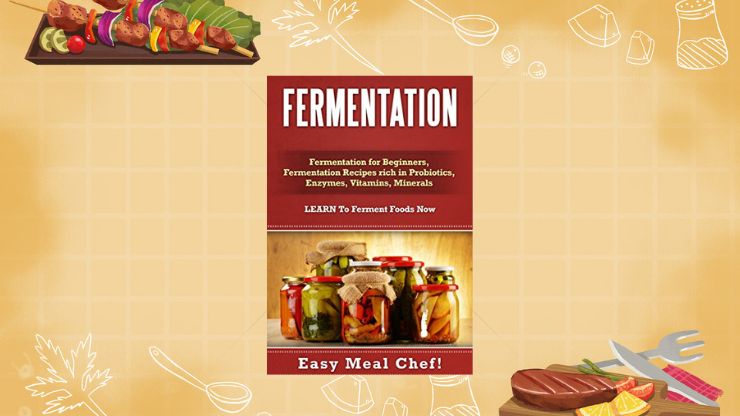Fermentation for Beginners, by Julie Eldred, is a cookbook for fermented food with recipes for kraut, kimchi, créme fraiche, water kefir, and other fermented beverages.
My favorites are the ones that combine regular ingredients with fermented ingredients, such as a pea salad with bacon and créme fraiche, spicy and creamy potatoes, and several fermented fruit salad recipes. Adding a bit of fermented food to regular recipes is a great way to get your family to eat more probiotics.
Table of Contents
ToggleMust Read Fermentation for Beginners
Unlock the Secrets of Tangy Traditions: Fermentation for Beginners
Recipe format
I prefer for recipes to have bulleted ingredients and numbered directions. In Fermentation, Julie Eldred wrote everything in paragraph style. This format makes it difficult to pull the ingredients out of the recipe to write a grocery list.
I also like to see more specific amounts. For example, Eldred’s recipes ask for medium-sized cabbage heads with no reference to what kind of cabbage to use. There are so many different types of cabbages. All of these cabbages have different sizes, shapes, and weights. I imagine her recipes use the normal cabbage we call green cabbage. If the reader were to use Napa (or Chinese) cabbage, the difference in weight may make a huge difference in the outcome. A solution to this problem is listing ingredients by weight or volume. A more precise measurement is helpful to keep consistency, flavors, and results similar.
Don't just scroll, subscribe!
BuzzTrail's unique web-stories are the cure for boredom you've been waiting for.
Also Read: Unlocking Wisdom: A Journey Through 6 Must-Read Philosophy Books
Easy to read, but lacking information
Eldred’s writing style is very down-to-earth and easy to read. There are no complicated terms in this book that I did not understand. The recipes got to the point, and so did the writing. It is a great read for a beginner in that sense. Although, for beginners, this could serve only as a cookbook. Fermentation does not include basic information for beginners, like choosing vessels, which salt to use, why not use a fork to taste test your ferments, and so on. So, a beginner would need a firm grasp of these concepts in order to fully understand this book.
At the beginning of Fermentation, Eldred takes the reader through all the wonderful benefits of fermented foods. It reminds the reader from the start what interested her in starting to ferment foods in the first place.
Overall, I like this book. I love the recipes, especially the fruit salad. They are recipes I have not seen anywhere else, and I know they will be a big hit. I am happy that I have this book and have found some new recipes to try! I do recommend this book.
Final words
In concluding our exploration of “Fermentation for Beginners,” we unveil a treasure trove of insights into the world of fermented delicacies. This beginner’s guide serves as a gateway into the age-old practice of fermentation, offering not just recipes but a journey into the transformative world of probiotic-rich foods. It’s an invitation to embark on a flavorful adventure, exploring the simplicity and complexity of fermenting ingredients to create tangy, flavorful delights. This book review aimed to showcase the accessibility, depth, and culinary wonders found within the pages, encouraging readers to embrace the art of fermentation and savor the tangy, delicious results.
FAQs
Is this book suitable for absolute beginners in fermentation?
Is this book suitable for absolute beginners in fermentation?
Absolutely! It’s crafted as a beginner’s guide, providing step-by-step instructions and explanations to introduce newcomers to the art of fermentation.
Does the book cover a wide range of fermentation techniques and recipes?
Does the book cover a wide range of fermentation techniques and recipes?
Yes, it offers a diverse array of fermentation methods, from basic vegetable ferments to beverages like kombucha and kefir, catering to various tastes.
Can I find troubleshooting tips for common fermentation issues in the book?
Can I find troubleshooting tips for common fermentation issues in the book?
Yes, the book includes troubleshooting sections addressing common problems encountered during fermentation processes.
Does this book emphasize the health benefits of fermented foods?
Does this book emphasize the health benefits of fermented foods?
Indeed! It highlights the probiotic-rich nature of fermented foods and their potential health advantages for gut health and overall well-being.

